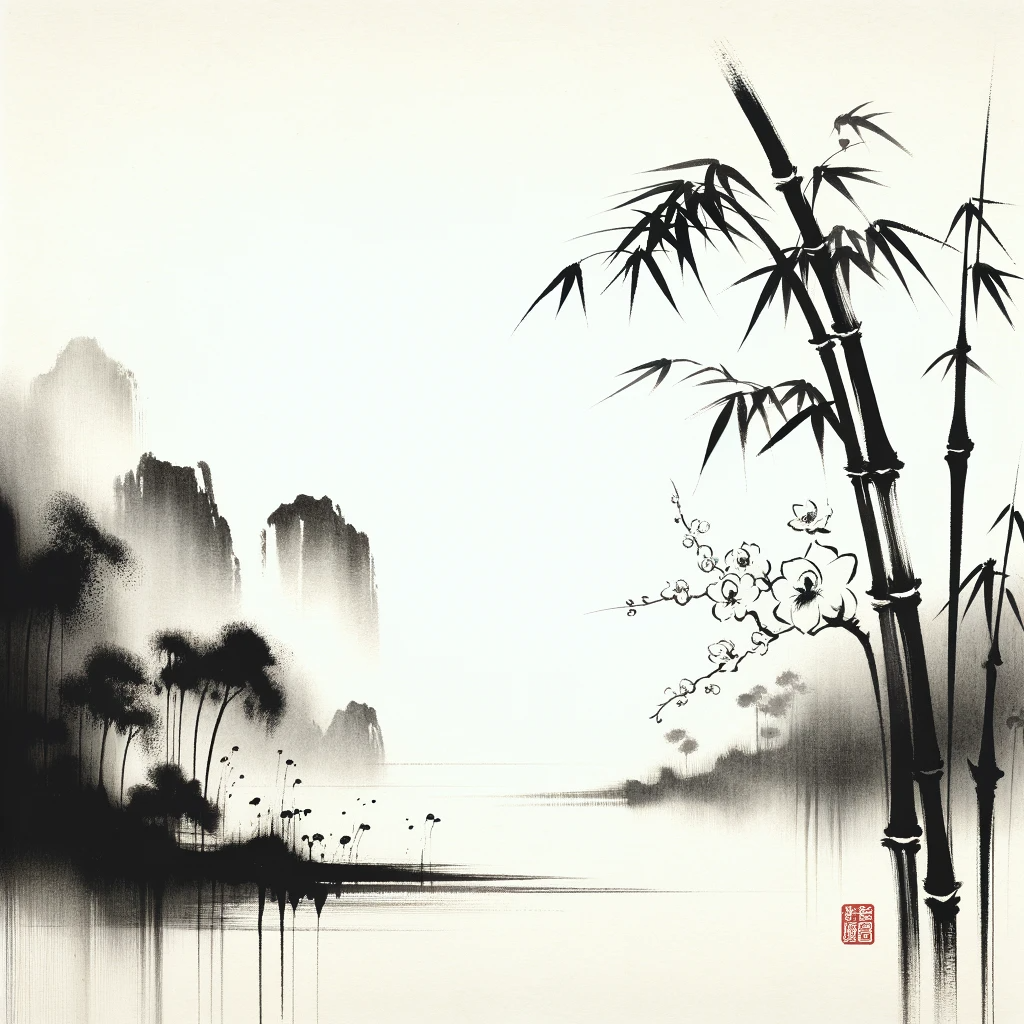Sumi-e, a traditional Japanese ink painting, holds an esteemed place in the world of art. This unique art form is deeply rooted in Zen Buddhism and emphasizes the beauty of simplicity, stillness, and the harmonious balance between black and white. A prominent Sumi-e artist, Hakuin Ekaku, a 17th-century monk, is famed for his Zen paintings that reflect this style's essence.
Understanding Sumi-e
The term Sumi-e directly translates to 'black ink painting' in English. This art form originated in China and later developed in Japan, where it evolved to incorporate local aesthetics and Zen philosophy. Sumi-e is more than just a painting technique; it is a spiritual practice aimed at uncovering the true nature of the object being painted and the artist.
The style of Sumi-e is characteristically minimalistic. Using only black ink and various gradations of gray, artists depict nature, life, and emotion. It values suggestion over detail, simplicity over complexity. Every brush stroke is deliberate, every empty space (or "ma") carries meaning. This careful balance between painting and non-painting, the interaction of light and dark, gives Sumi-e its unique depth and tranquility.
Ink and Spirituality
The ink used in Sumi-e is the same as that used in East Asian calligraphy. It's typically handmade, with artists often grinding their own ink before painting. This ritualistic process of preparing ink is seen as an integral part of the art, fostering mindfulness and tranquility.
A Sumi-e painting, in its serene elegance, is often likened to a meditative practice. The artist, through their brush, seeks to connect with the subject on a profound level, to understand its essence. This spiritual dimension of Sumi-e is a reflection of its Zen roots.
Hakuin Ekaku: A Master of Zen Paintings
A key figure in Sumi-e art is Hakuin Ekaku, a Zen monk renowned for his powerful ink paintings. Hakuin's works are a beautiful manifestation of his spiritual insights. He had a unique ability to convey complex Zen teachings through simple yet profound images.
Hakuin's paintings, typically of Buddhist deities, Zen masters, and nature scenes, are celebrated for their vibrant energy and depth. His 'blind monks examining an elephant' is a compelling portrayal of the Buddhist parable about perception and truth.
Sumi-e: An Enduring Art Form
Despite its ancient origins, Sumi-e remains a popular and revered art form. It continues to inspire artists worldwide, who are captivated by its simplicity, depth, and spiritual underpinnings. The beauty of Sumi-e lies in its quiet elegance, its celebration of the unadorned, and its profound connection with nature and the universe.
In an era dominated by complexity and noise, Sumi-e offers a peaceful respite, a silent dialogue between the artist and the universe. It reminds us that often, less is more, and silence can speak louder than words. As we appreciate a Sumi-e painting, we are not merely observing an artwork; we are stepping into a meditative space and experiencing a timeless journey of self-discovery and transcendence.
